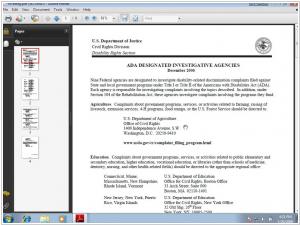Adobe Digital Editions vs Adobe Reader
Last updated: July 09, 2023
Adobe Digital Editions and Adobe Reader are both software applications developed by Adobe, but they serve different purposes and have distinct differences in terms of their functionalities, supported file formats, and target users. One key difference lies in their primary focus. Adobe Digital Editions is primarily designed for reading and managing e-books. It supports popular e-book formats such as EPUB and PDF and provides features specifically tailored for the e-book reading experience, such as customizable font settings, bookmarking, and annotation options. Adobe Digital Editions is geared towards users who want to read and organize their digital book collections on various devices. On the other hand, Adobe Reader is primarily focused on reading and interacting with PDF documents. It offers a wide range of features for viewing, annotating, and collaborating on PDF files. Adobe Reader is designed for users who need to work with PDF documents, such as viewing and signing contracts, filling out forms, and reviewing documents.
Another notable difference between Adobe Digital Editions and Adobe Reader lies in their supported file formats. Adobe Digital Editions is specifically designed for e-book formats, with support for EPUB and PDF. It also supports Adobe DRM, which allows users to access and read protected e-books. On the other hand, Adobe Reader focuses primarily on PDF files and offers extensive features for working with this file format. It allows users to view, navigate, search, and annotate PDF documents. Adobe Reader also supports various interactive features in PDFs, such as fillable forms, multimedia elements, and digital signatures. Adobe Reader's focus on PDF compatibility makes it a versatile tool for working with PDF documents in various contexts.
Additionally, Adobe Digital Editions and Adobe Reader differ in their user interfaces and design choices. Adobe Digital Editions provides a user-friendly interface specifically designed for e-book reading. It offers customizable display options, bookmarking, and annotation tools within a clean and intuitive layout. Adobe Digital Editions' interface emphasizes a seamless reading experience for e-books. On the other hand, Adobe Reader provides a comprehensive set of features within a more complex user interface. It offers an array of tools and options for working with PDF documents, including navigation panes, toolbars, and menus. Adobe Reader's interface is designed to cater to users who require advanced PDF functionality and precise control over their document interactions.
Another notable difference between Adobe Digital Editions and Adobe Reader lies in their supported file formats. Adobe Digital Editions is specifically designed for e-book formats, with support for EPUB and PDF. It also supports Adobe DRM, which allows users to access and read protected e-books. On the other hand, Adobe Reader focuses primarily on PDF files and offers extensive features for working with this file format. It allows users to view, navigate, search, and annotate PDF documents. Adobe Reader also supports various interactive features in PDFs, such as fillable forms, multimedia elements, and digital signatures. Adobe Reader's focus on PDF compatibility makes it a versatile tool for working with PDF documents in various contexts.
Additionally, Adobe Digital Editions and Adobe Reader differ in their user interfaces and design choices. Adobe Digital Editions provides a user-friendly interface specifically designed for e-book reading. It offers customizable display options, bookmarking, and annotation tools within a clean and intuitive layout. Adobe Digital Editions' interface emphasizes a seamless reading experience for e-books. On the other hand, Adobe Reader provides a comprehensive set of features within a more complex user interface. It offers an array of tools and options for working with PDF documents, including navigation panes, toolbars, and menus. Adobe Reader's interface is designed to cater to users who require advanced PDF functionality and precise control over their document interactions.
28
Adobe Digital Editions software offers an engaging way to view and manage eBooks and other digital publications. Use it to download and purchase digital content, which can be read both online and offline. Transfer copy-protected eBooks from your personal computer to other computers or devices. Organize your eBooks into a custom library and annotate pages. Digital Editions also supports industry-standard eBook formats, including PDF/A and EPUB.
21
Adobe Reader software is the free trusted standard for reliably viewing, printing, and annotating PDF documents. It’s the only PDF file viewer that can open and interact with all types of PDF content, including forms and multimedia.
Adobe Digital Editions vs Adobe Reader in our news:
2017. Older versions of Adobe Digital Editions are no longer compatible with Overdrive
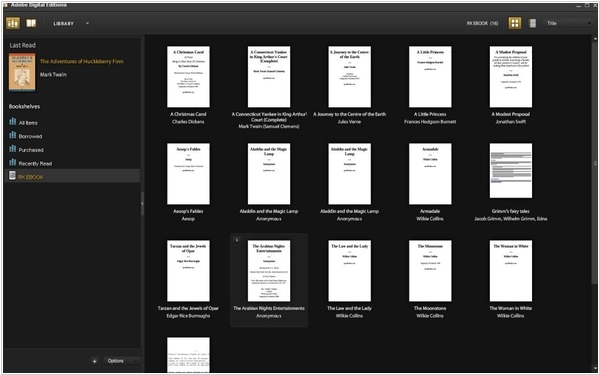
Ebook catalog software, Adobe Digital Editions, offers the functionality to transfer borrowed e-books from libraries or other bookstores to your e-reader, smartphone, or tablet. However, users of older versions of Digital Editions have been encountering numerous errors recently. This can be attributed to the updates made by Google Play, Overdrive, and other online retailers to the Adobe Content Server, resulting in compatibility issues for those relying on outdated versions of Adobe Digital Editions. To address these problems, it is crucial to update to version 4.5 of the software, which currently appears to be functioning without major issues.
2016. Adobe Digital Edition patches critial security flaws
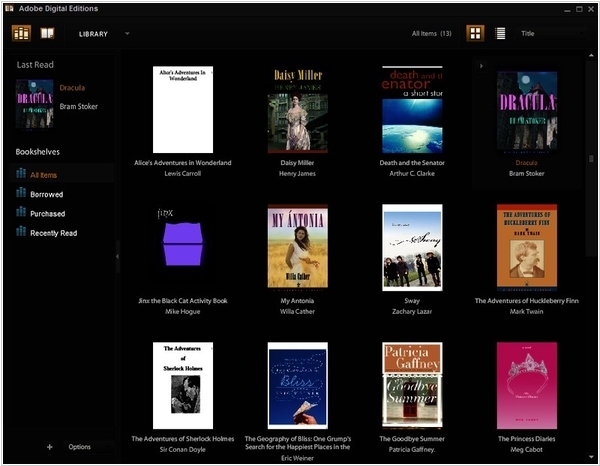
Adobe Digital Editions, a program utilized for acquiring, managing, and reading e-books, has unfortunately become a target for hackers, much like other Adobe software. Cybercriminals exploit this software as a means to distribute viruses and malware onto users' computers. Recently, four critical vulnerabilities that allow for arbitrary code execution were discovered in Adobe Digital Editions. Considering that the software relies on the internet for updates and acquiring books, this poses a significant risk to your computer's security. To address these vulnerabilities, Adobe is promptly releasing a security update. It is crucial that you update your Adobe Digital Editions software as soon as possible, especially if you use it for managing your e-books.
2015. Adobe Digital Editions app for the iPad released
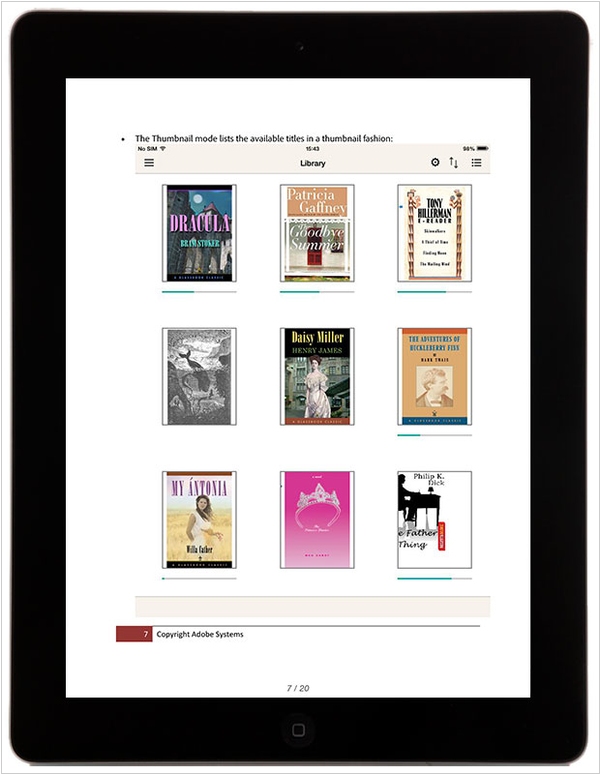
Adobe has introduced an iPad version of its personal library organizer, Adobe Digital Editions. This app is compatible with ePUB, including ePUB3, and PDF formats. While the app may appear utilitarian in design, lacking an exciting demonstration of its capabilities, it offers a straightforward guide to reading ePUBs and PDFs once installed. Adobe is not alone in facing criticism for its own eBook products, as even Apple's iBooks Store rarely showcases the potential of its own iBooks Author, suggesting a certain disconnect in Apple's publishing efforts. Nonetheless, Adobe Digital Editions proves useful for readers seeking access to eBooks from their local library.
2014. Adobe’s e-book reader tracks readers’ data
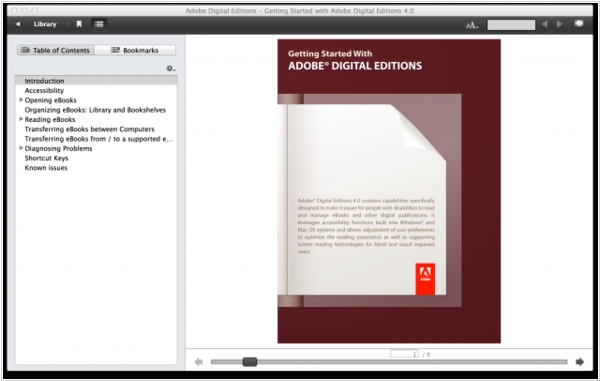
As per a report from Ars, it has come to light that Adobe Digital Editions, the widely-used e-book and PDF reader in numerous libraries, keeps track of and records the activity of patrons accessing electronic lending libraries. Disturbingly, this includes logging every document added to the local "library" and monitoring users' interactions with those files. Adding to the concern, these logs are transmitted over the Internet without encryption, meaning that anyone capable of monitoring network traffic (such as the National Security Agency, Internet service providers, cable companies, or individuals sharing a public Wi-Fi network) can easily observe users' actions. This raises significant privacy and security issues, as unauthorized individuals can essentially peer over the shoulders of readers, infringing upon their privacy and potentially accessing sensitive information.
2014. Adobe Digital Editions 3.0 promises better DRM, layout support
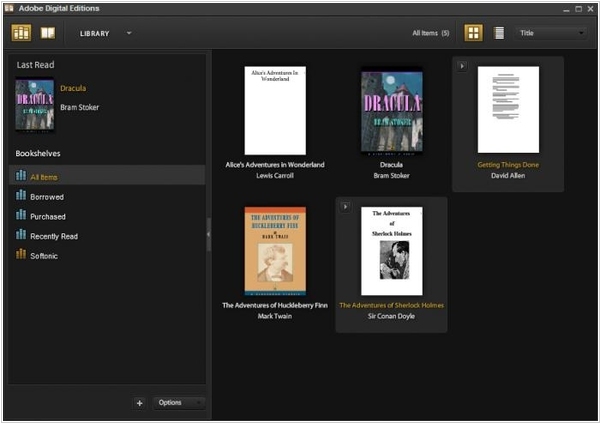
Adobe has recently unveiled the latest iteration of its library organization software, Adobe Digital Editions 3.0, catering to both Windows and Mac users. The prominent highlight of this release is the introduction of an upgraded DRM Scheme. According to Adobe, this new scheme has undergone rigorous reinforcement to bolster its security measures, thwarting any unauthorized access to files protected by Digital Rights Management. Version 3.0 also brings notable enhancements to the search functionality when sifting through PDF files, enabling users to conduct targeted searches within specific text ranges. Additionally, the update incorporates improved support for vertical layout and orientation by incorporating limited compatibility with the "epub-text-orientation" CSS property. Adobe Digital Editions now grants access to four out of the property's six values: mixed, upright, sideways-right, and sideways. Moreover, it now accurately aligns special characters that serve as both full- and half-width representations. Users can readily obtain Adobe Digital Editions 3.0 as a freely available download for both Windows and Mac platforms. To utilize the software as a supported device for reading protected eBook files, users must possess an Adobe ID, which is necessary for signing in and authorizing their computer.
2014. Adobe Digital Editions 2.0 adds accessibility support
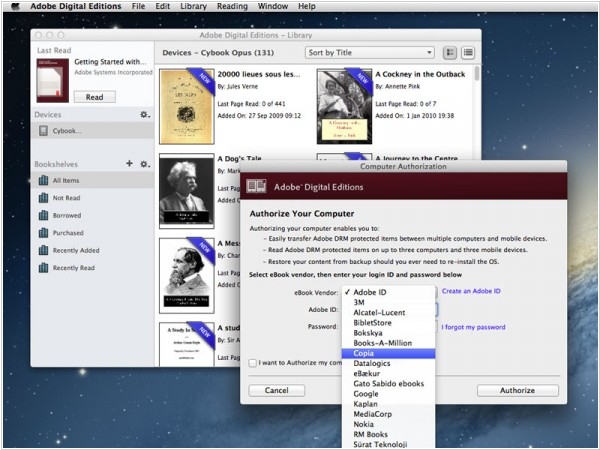
Adobe has introduced Adobe Digital Editions 2.0, a free software application designed for organizing ebooks on both PC and Mac platforms. This release marks the inclusion of accessibility support for the first time, along with the incorporation of cutting-edge mobile reader technology, facilitating seamless ebook management between computers and mobile devices. The standout feature in Adobe Digital Editions 2.0 is its enhanced accessibility functionality, which ensures a more convenient reading experience for ebooks. This encompasses provisions for high-contrast screens and assistive software such as Window-Eyes (Windows), VoiceOver (Mac), JAWS, and NVDA. Furthermore, Version 2.0 encompasses the latest advancements in mobile reader technology, including Vendor ID, Bookseller ID, and Japanese text support. These additions enable users to sign in using Vendor or Bookseller IDs from platforms like Google or Barnes & Noble, granting access to purchased content from these vendors. Adobe Digital Editions 2.0 can be downloaded free of charge for both PC and Mac systems. To transfer book purchases utilizing the program, users need a compatible EPUB-capable eBook Reader. A comprehensive list of compatible devices can be found here.


